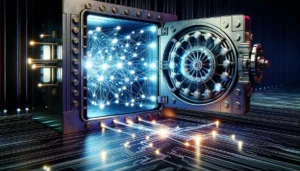Ever wondered what a DAO is and why it’s becoming the talk of the town in the crypto space?
Imagine a futuristic organization run not by humans, but by code! DAO, short for Decentralized Autonomous Organization, is shaking up traditional governance models and paving the way for a new era of collaboration.
Let’s dive into the exciting world of DAOs and explore how they are redefining the way we think about organizations and governance.
In this article, we will unfold the core principles of DAOs, their structure, the advantages and challenges they present, and how you can become part of this revolutionary movement.
Moreover, we’ll take a glimpse into the future to see how DAOs are shaping the evolving landscape of decentralized finance and blockchain technology.
Key Takeaways
Key Points Explanation Definition of DAO DAOs are decentralized and autonomous organizations governed by smart contracts on a blockchain. Governance Mechanism DAOs operate through a consensus mechanism allowing members to vote on decisions. Role of Smart Contracts Smart contracts facilitate the operations and enforce the rules within a DAO. Advantages DAOs promote transparency, inclusivity, and can operate without centralized control. Challenges Legal recognition, scalability, and security are among the challenges faced by DAOs. Future Trends DAOs are evolving with new governance models, and increasingly interfacing with other blockchain projects and traditional sectors.
Understanding Decentralized Autonomous Organizations (DAOs)
Definition and Core Principles
DAOs, short for Decentralized Autonomous Organizations, represent a novel form of governance, blending traditional organizational structures with blockchain technology.
At their core, DAOs are:
- Decentralized: No single entity has control; decisions are made collectively.
- Autonomous: Operations are carried out automatically via smart contracts.
- Organizations: They have a purpose, membership, and rules of operation.
Historical Background and Evolution
DAOs emerged as an evolution of traditional governance models, powered by advancements in blockchain technology.
They were envisioned to overcome the centralized decision-making process, foster transparency, and promote collective decision-making.
Legal Framework and the Status of DAOs
The legal recognition of DAOs is a gray area. It varies across jurisdictions, and there’s an ongoing debate regarding their legal status.
The Rise of Decentralized Finance (DeFi) article on CryptoMindPro elaborates on how decentralized finance, a concept closely related to DAOs, is also navigating the legal landscapes.
By delving into the essence of DAOs, this section lays the foundation for further exploration into their structure, advantages, and how you can get involved in the subsequent sections.
Key Components and Structure of DAOs
Governance Mechanisms in DAOs
The governance mechanism is the heart of any DAO, facilitating:
- Proposal Submission: Members propose changes or actions.
- Voting: Members vote on proposals based on consensus rules.
- Execution: Approved proposals are executed automatically via smart contracts.
Decision-Making Process
In DAOs, decision-making is a collective endeavor. It encompasses:
- Consensus Algorithms: Ensures every member’s voice is heard.
- Voting Rights: Often tied to token ownership within the DAO.
Role of Smart Contracts and Blockchain Technology
Smart contracts and blockchain are the backbone of DAOs, ensuring:
- Transparency: Every transaction and decision is recorded on the blockchain.
- Automation: Smart contracts execute actions without manual intervention.
- Security: Blockchain’s immutable nature protects against fraud and manipulation.
This structure fosters a democratic, transparent, and automated environment, aligning with the essence of decentralized finance explored in CryptoMindPro’s article.
Through these mechanisms, DAOs are redefining how organizations operate and make decisions, propelling us towards a more open and collaborative world.
Advantages and Challenges of DAOs
Benefits of Decentralized Governance
DAOs offer a myriad of advantages:
- Transparency: All transactions are publicly verifiable on the blockchain.
- Inclusivity: Anyone can participate regardless of their location.
- Efficiency: Automated decision-making speeds up processes.
Common Challenges and Their Solutions
However, DAOs also face several hurdles:
- Legal Recognition: Varies by jurisdiction, complicating operations.
- Security Risks: Smart contract vulnerabilities can be exploited.
- Scalability: Managing a growing number of members and proposals.
As seen in CryptoMindPro’s analysis, the decentralized nature of DAOs aligns with the broader movement towards a more open and equitable financial system.
Through understanding these advantages and challenges, we gain a clearer perspective on the DAOs’ revolutionary potential and the hurdles that lie ahead.
Getting Involved in a DAO
How to Join a DAO
Joining a DAO involves a few steps:
- Research: Explore different DAOs to find a fit.
- Membership: Acquire tokens or fulfill other membership criteria.
- Participation: Engage in proposals and voting.
Responsibilities and Roles within a DAO
Members have various roles:
- Proposers: Submit new proposals.
- Voters: Vote on proposals.
- Developers: Maintain the DAO’s smart contracts.
Overview of Popular DAOs in the Crypto Space
Several DAOs have gained popularity:
The decentralized ethos of DAOs, as highlighted in CryptoMindPro’s discussion on DeFi, allows individuals worldwide to collaborate and make collective decisions, pushing the boundaries of traditional organizational structures.
Future of DAOs
Emerging Trends and Developments
The landscape of DAOs is continually evolving with:
- New Governance Models
- Cross-DAO Collaborations
- Integration with other Blockchain Innovations
Intersection with Other Blockchain Innovations
DAOs are converging with other blockchain sectors like:
- NFTs
- DeFi
- Cross-chain Interoperability
Implications for Traditional Organizational Structures
DAOs challenge traditional hierarchies and introduce a paradigm of:
- Democratic Decision-making
- Open Participation
- Transparency in Operations
Navigating the DAO Revolution
As we venture into the novel terrain of Decentralized Autonomous Organizations, we’re not just exploring a new form of governance; we’re partaking in a broader movement towards a more open and decentralized world.
Through the lens of DAOs, we glimpse a future where collaboration transcends geographical bounds, and collective decision-making is the norm.
As this wave of decentralization continues to unfold, embracing the ethos of DAOs could well be our passport to a more inclusive and transparent global community.
The journey through the DAO landscape is bound to be as transformative as it is exhilarating. Are you ready to dive in?
Frequently Asked Questions
| Questions | Answers |
| What is a DAO? | A DAO (Decentralized Autonomous Organization) is a blockchain-based entity governed by smart contracts and consensus among its members. |
| How does a DAO operate? | DAOs operate through a consensus mechanism, where members propose, vote on, and execute decisions via smart contracts. |
| What are the benefits of DAOs? | DAOs promote transparency, inclusivity, and efficiency by leveraging blockchain technology and decentralized governance. |
| What challenges do DAOs face? | Legal recognition, security risks, and scalability are common challenges faced by DAOs. |
| How can I join a DAO? | Research various DAOs, acquire the necessary membership tokens or fulfill other criteria, and participate in the governance process. |
| Are DAOs legal? | The legal status of DAOs varies by jurisdiction and is an evolving area of law. |
| How are DAOs changing the future? | DAOs are fostering a new era of collaborative decision-making and challenging traditional organizational structures. |




